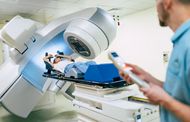
New paper on the historical and scientific perspective on perceptions of radiation therapy and its risks
The IORBC welcomes a new paper on the historical and scientific perspective on perceptions of radiation therapy and its risks.
The paper — ‘Radiation medicine at a crossroads: a historical perspective to consider future directions’ — also questions the linear no threshold (LNT) hypothesis and the emergence of data on radiation hormesis, with the hope it will stimulate debate about the expansion of the use of radiotherapy beyond its primary use for neoplastic disease into conditions such as neurodegenerative, neuroinflammatory and autoimmune disease, and acute spinal cord injury.
The impetus behind the paper was the COVID-19 pandemic in 2020. The report notes that as the world began to shut down, oncologists ‘had to scramble to ensure the safe continuation of treatment for cancer patients’, with many also ‘sharing historical research on using radiotherapy to treat pneumonia from the pre-antibiotic era’ and ’discussing clinical trial design to use low dose radiation therapy (LDRT) for a novel non-malignant disease’. However, strong opinions were observed both for and against clinical trials for COVID-19 lung disease.
The paper performs an excellent job in providing a historical perspective on the shaping of attitudes towards radiotherapy. In short, some of the key takeaways are:
Prior to World War II, the role of radiation developed and found a place in medicine — with the discovery of X-rays in 1895, ‘radiation became popularised, commercialised, and exploited in society’. Its place for treating a variety of diseases became well established.
This situation changed in 1945, when the U.S.A. used atomic bombs to bring an end to World War II. The way radiation was perceived became about the ‘destructive power of nuclear weapons’.
Despite this, in part because fear of the disease exceeded that of the treatment, the use of radiation therapy for cancer continued to evolve.
In 1971, Richard Nixon signed the National Cancer Act to create the National Cancer Institute and commit funding to the “war on cancer”.
This may have galvanised research and innovation but may have also limited ‘our ability to consider other approaches to diagnosis, treatment, and patient care that do not require aggression toward a disease that may make patients feel like casualties’.
Safety concerns have been guided ‘largely by application of the linear-quadratic and linear no threshold (LNT) hypotheses to model risk of injury’. With the U.S. National Academy of Sciences’ report on the Biologic Effects of Ionizing Radiation, BEIR VII, erring on the side of caution by defining any radiation exposure as potentially dangerous, regulation has become increasingly stringent.
On the flipside, ‘by accepting the assumption of danger from very low doses of radiation, LNT and BEIR VII has also limited our ability to identify opportunities to reconsider the potential clinical value of radiation therapy in non-malignant disease.’
Despite the strong focus on cancer care, present-day radiation therapy has found a place in the treatment of non-neoplastic disease in both the U.S. and Europe. In the United States it is still regularly used for:
keloids and heterotopic ossification
gynecomastia
hyperthyroidism
trigeminal neuralgia
refractory cardiac arrhythmias
While in Europe, most notably Germany and Central Europe, radiation has additionally been extensively used to alleviate non-malignant conditions such as:
Dupuytren's contracture
Ledderhose disease
osteoarthritis and tendonitis
macular degeneration
This is certainly the case with Europe-based IORBC members, such as Dr. Richard Shaffer (England), Prof. M. Heinrich Seegenschmiedt (Germany), and Dr. Silvia Gomez (Switzerland), who regularly treat patients for these and other benign conditions.
However, there is still room for improvement in the adoption of present-day radiotherapy use — with IORBC members continually raising awareness of the use of LDRT to treat benign conditions. The paper also recognises the potential areas of development such as neurodegenerative/neuroinflammatory disease, in autoimmune and inflammatory conditions, and acute injury.
We look forward with optimism for what the future holds for LDRT use and hope that perspectives on this matter continue to change.
A note from the IORBC:
The paper makes a special effort to recognise that despite ‘the existence of supportive clinical data for a variety of conditions’ the use of LDRT for anti-inflammatory indications remains ‘uncommon in the U.S’.
This lack of prevalence is something the International Organisation for Radiotherapy for Benign Conditions is actively working to combat. Our measures include (to name a small selection):
employing U.S. based radiation oncologists onto the IORBC Clinical Advisory Board, such as Northwestern University trained Dr. Bobby N. Koneru and Dr. Tarita Thomas
providing America-based lectures on benign radiotherapy, including at the Mayo Clinic, with the lecture itself conducted by IORBC President Dr. Shaffer and Clinical Chairman Prof Seegenschmiedt
running webinars on benign conditions with Atlanta-based Xstrahl, radiation machine manufacturer and founding sponsor of the IORBC exhibiting at popular functions, such as at ASTRO
Access the full text at the link below:
https://www.sciencedirect.com/science/article/pii/S2773066225001160
Citation:
Matthew S. Katz, Anthony J. Chalmers,
Radiation medicine at a crossroads: a historical perspective to consider future directions,
The Royal College of Radiologists Open,
Volume 3,
2025,
100350,
ISSN 2773-0662,
https://doi.org/10.1016/j.rcro.2025.100350.